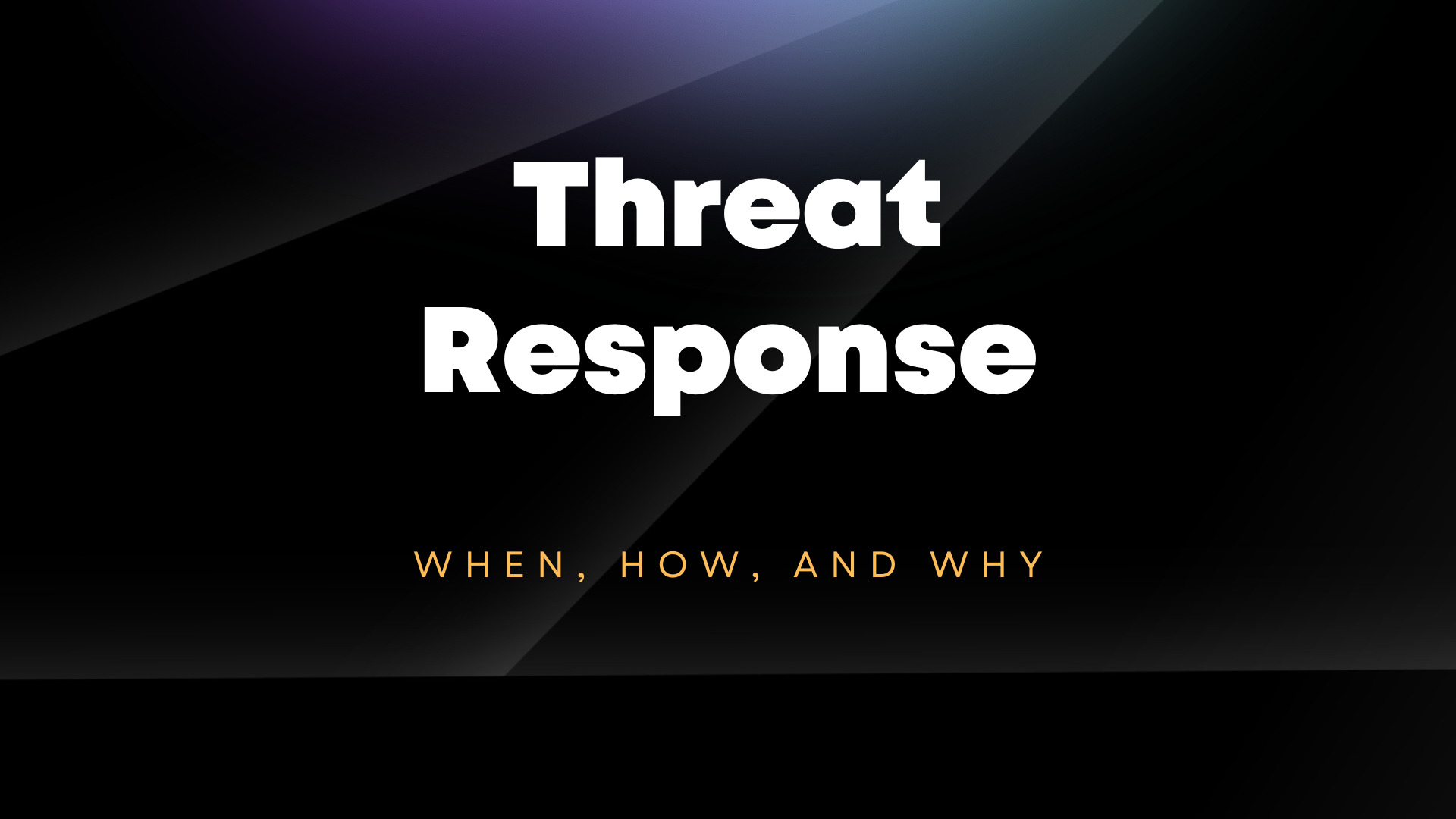Threat Response: When, How, and Why Key Points: The number and severity of cyberattacks are growing consistently While many companies develop threat response plans, only a few know how to use them effectively More than 60% of businesses without a robust threat response plan close their doors within six months after a cyberattack Reviewing and […]
Key Points:
Did you know that a cyberattack happens every 11 seconds? By 2025, these crimes will cost the world more than $10 trillion. By implementing robust threat response tactics, you can prevent the unfortunate consequences of a cyberattack and keep your reputation intact.
Hackers don’t discriminate. They attack businesses and organizations of all sizes across all industries. Cybercriminals often have different opinions, even if you don’t think your data is valuable enough to warrant a breach.
Let’s take a closer look at the importance of a threat response strategy for your organization.

The threat response is a set of tactics designed to identify, contain, and counter cyberattacks. The goal of threat response is to prevent severe consequences of cyber threats and avoid new attacks in the future.
The success of threat elimination depends on many factors, including:
When a cybercriminal tries to initiate a breach, it’s possible to minimize damage with the right threat response tactics. Some IT security teams leverage automated threat response tools that detect an attack and notify responsible parties.
Many organizations choose one of these two cybersecurity frameworks to create a successful threat response plan:
While high-quality cybersecurity measures are an integral part of your company’s operation, it’s only a matter of time before cybercriminals find a loophole. That’s where your threat response strategy kicks in.
Despite disturbing statistics demonstrating an increasing number of cyberattacks, more than 75% of organizations still don’t have a well-implemented threat response plan.
For a threat response strategy to succeed, it’s imperative to take a comprehensive approach to these elements.
Roles and Responsibilities
When an attack occurs, all parties involved need to know their responsibilities. An employee who discovers an attack often loses valuable time by failing to report it.
Ideally, you should have a threat response team that knows exactly how to react to a cyber threat to minimize damages. Even if you have an automated threat response system in place, you still need IT experts to achieve top results.
Employees need to know precisely who is responsible for threat mitigation and understand the importance of quick reporting.
Detection and Analysis
The organization should have transparent and accessible documentation explaining how incidents are detected, reported, and investigated.
Recognition and response tactics may vary depending on the type of threat. The response team needs clear instructions that help them react to specific situations. Templates and examples can be highly useful.
Disaster Recovery Plan
A disaster recovery plan is a set of measures designed to minimize the damage caused by a cyberattack. In some cases, high-quality threat detection plans don’t yield the desired results, and an attack causes damage.
If this happens, the company should have a disaster recovery plan to avoid downtime, prevent reputational issues, and minimize expenses.
The first step to developing a comprehensive threat response strategy is understanding the true danger of cyberattacks. Statistics show that 60% of small businesses close shop within six months after a successful attack.
To save your organization time, money, and effort, you can hone your threat response plan with these best practices:
Create a Playbook
Many companies have a threat response plan. However, when disaster strikes, they fail to implement it. One of the reasons is the lack of transparency. That’s where a playbook can help.
A threat-specific playbook with examples allows responsible parties to understand their exact actions. For example, you need to start data recovery procedures after a ransomware attack. The playbook with checklists can explain exactly how and when this needs to be done in this particular situation.
Schedule Reviews
The world of cyber threats changes faster than you can say “disaster recovery plan.” To stay ahead in the never-ending race between cybersecurity specialists and hackers, you must regularly review your threat response plan.
While reviewing tactics based on the new technologies or hacking schemes, you can work on cybersecurity hygiene. This involves changing passwords, checking authorization, updating software, and more.
Consider Outsourcing
The complexity of threat response tactics makes it harder and harder to maintain them internally. Small and midsize businesses rarely have a sufficient budget to support a large in-house IT team. As a result, they delegate threat responses to other employees with little experience with cybersecurity measures.
Some companies choose to outsource threat response to managed IT service providers. These companies design and maintain threat response plans, provide 24/7 monitoring, take proactive cybersecurity steps, and much more.
Plan a Recovery Budget
Disaster recovery is an integral part of a successful threat response strategy. Preparing for it in advance could allow your organization to remain on its feet. To do that, you need to identify a cyberattack recovery budget.
Your threat response team should know exactly how to use the budget. Otherwise, they could make significant errors during the post-attack chaos.
With cybersecurity threats on the rise, the importance of a consistent threat response plan increases daily. With the right approach, it’s possible to prevent attacks, minimize damages, save reputation, and improve your company’s bottom line.
Even if you already have a threat response strategy, consider reviewing it regularly and ensuring that all team players know their roles and responsibilities.